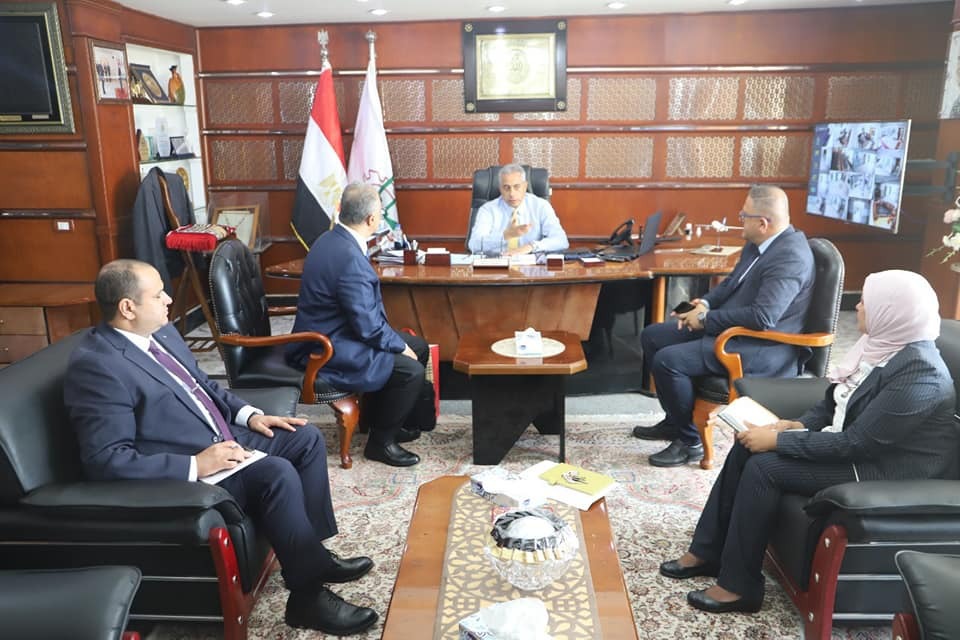The Gulf states often attract attention for their fast pace of physical development, as striking new commercial and government complexes appear in the skylines of Dubai, Abu Dhabi, Doha, Kuwait, Manama and elsewhere. Yet something more intriguing and politically significant than spectacular architecture is taking place in the Gulf these days, and its impact is being felt around the region.
Dubai is the most extreme example of this Gulf-wide phenomenon of hyper-growth. Its rabid pace of development is expected to continue for another decade or more, bringing Dubai’s population of 1.4 million to over 5 million. More significant is the spillover of this phenomenon to other parts of the Arab world. The public sector surplus income in Arab Gulf states is finally filtering through to spur substantial private-sector investments channeled by Arab financial services firms into investments throughout the region. For the first time in many decades, significant new job creation is being generated mainly by the Arab private sector rather than by governments, and thus unemployment rates are declining.
A generation ago, during the 1973-85 oil boom, most of the oil income was intermediated by Western banks and finance companies. The bulk went into building essential domestic infrastructure (roads, air and sea ports, power and telecommunications systems, housing, health care, schools), and the surpluses were mostly invested abroad. During the current high income cycle, the Gulf region is accumulating hundreds of billions of dollars that cannot be quickly spent by governments or invested at home by the private sector. The United States and Europe are less attractive investment destinations in the post Sept. 11 world of sanctions and financial embargoes, so more investments flow to Arab projects.
The recent increase in oil income, according to World Bank and Swiss bank executives who study the issue, has seen the Gulf countries, along with China and India, experience the fastest collective economic growth rate in the world, averaging 5-6 percent annually in the past five years. During that period, GNP for the Gulf region doubled, from $600 billion to $1.2 trillion. An estimated $700 billion-$800 billion is expected to be accumulated as surplus income during the present boom, and much of that is already being employed within the Arab world.
Signs of this abound throughout the region, mainly in the form of intra-Arab advertising for real estate, telecommunications, tourism and financial investments. Billboards on the highways to Amman, Cairo, Beirut, Doha and Dubai airports have a similar look to them these days, as private Arab funds and sound investments seek each other out throughout the region. This suggests that the current boom may be sustainable – even when oil income declines – if today’s surplus funds are managed wisely and invested in sectors that have good long-term growth prospects.
The best sign of better prospects for the Middle East is that the education sector is experiencing a real increase in spending. This is a welcome sign for future growth prospects in a globalized economy increasingly focused on knowledge and information industries. Jobs are being created at a faster pace than new entrants into the labor force, which is driving down unemployment in the Middle East and North Africa for the first time in some two decades. Overall regional unemployment has dropped from 14 to 11 percent in the past few years, the World Bank estimates.
Most new jobs are low-quality and low-productivity ones, to be sure. But combined with improved education standards, stronger links between the education and labor sectors, and more private sector training opportunities, the new jobs now being created can set the stage for a shift into high-income, high-quality jobs – much like those such states as Ireland and Singapore have created for their citizens in recent decades.
The current oil boom has triggered two novel and important trends in the Arab world: an acceleration of Arab private-sector investment within the region, and government behavior that does not try to monopolize the economy but, instead, gives private sectors the opportunity to generate new investments, jobs and income. This can set the stage for the emergence of a strong, wide and deep middle class, made of citizens who have a vested interest in stability, security and prosperity. This contrasts sharply with the current majority of Arabs who are economically stressed, politically resentful of their own and Western governments, and just as inclined to cheer the destroyers as the builders of the existing Arab order.
Governments and globalization alone have not been able to achieve the sustained economic growth that is needed to shift the Middle East from a region of turbulence and violence to one of stable expansion and rising middle class prosperity. We now have a new chance to move in this direction, if governments, private sectors and foreign partners work together to achieve the elusive mix of democratic governance, efficient private-sector-driven economies, resolution of major regional conflicts, and an end to destructive foreign militarism.
Rami G. Khouriis published twice-weekly by THE DAILY STAR.

